DOH Medicaid Update April 2007 Vol. 22, No. 4
Office of Medicaid Management
DOH Medicaid Update
April 2007 Vol. 22, No. 4
State of New York
Eliot Spitzer, Governor
Department of Health
Richard F. Daines, M.D., Commissioner
Medicaid Update
is a monthly publication of the
New York State Department of Health
Office of Health Insurance Programs
Deborah Bachrach, Deputy Commissioner
Table of Contents
Electronic Transmitter Identification Number Changes to Four Digits
Expiration of Exemption from Using Official New York State Prescriptions
Preferred Drug Program
Replacement of the UB-92 Claim Form with the UB-04 Claim Form
Changes to Paper Claim Forms
Documentation Required When Ordering New York City Transportation Services - A Map to the MAP-2015 Form
MAP-2015 Form (Livery, Ambulette, & Non-Emergency Ambulance Services Medicaid Transportation Prior Approval Form)
Change in Ambulette Reimbursement
NYS Medicaid Seating and Positioning Guidelines (for wheeled mobility)
Restructuring Long Term Care in New York State - Money Follows the Person Federal Rebalancing Demonstration Program
Making Playgrounds Safe for Our Children
Provider Services
Seminar Schedule
Important
Information!
National Provider Identifier
Implementation - Urgent
Return to Table of Contents
The Department has created the National Provider Identifier (NPI) Registration System.
As you know, all Medicaid providers are now required to have an NPI. You are required to register your NPI(s) with the corresponding MMIS Provider identification number(s) in this system!
As of March 1, 2007, only 10% of New York's Medicaid providers have registered their NPI(s). To be ready for implementation, 100% registration is required before the mandated date of May 23, 2007.
If you have not registered your NPI, please visit: https://npi.emedny.org/
To obtain an NPI, please visit: http://www.cms.hhs.gov/NationalProvIdentStand
The actual NPI implementation target date is not known at this point--this date will be communicated in a future Medicaid Update article.
The Department requires the MMIS Identification Numbers and/or License Numbers, when applicable, until the NPI system is implemented.
If you utilize a vendor in submitting electronic transactions to New York Medicaid, you should make sure they are aware of this condition.
Questions? Contact the eMedNY Call Center at:
1-800-343-9000.
eMedNY
Update
Electronic Transmitter Identification Number
Changes To Four Digits
Return to Table of Contents
eMedNY will begin assigning four-digit Electronic Transmitter Identification Numbers (ETIN), starting September 1, 2007 for new requests. The existing three-digit ETIN will continue to be used as they currently are, represented as three-digits in standard transactions and padded with a trailing space in proprietary Supplemental files.
Newly assigned ETINs will be represented as the full four-digits in all transactions.
Software vendors and clearinghouses should be aware of this and get ready for the change, as clients requiring new ETINs as of the date above will be assigned four-digit numbers.
The Companion Guides were updated with this requirement in March of 2005. Please consult the guides, located at:
http://www.emedny.org/hipaa/emedny_transactions/transactions.html
Questions? Please contact the eMedNY Call Center at 1-800-343-9000.
EXPIRATION OF EXEMPTION FROM USING
OFFICIAL NEW YORK STATE PRESCRIPTIONS
Return to Table of Contents
The Department of Health previously exempted all New York State hospitals from the Public Health Law requirement for their staff practitioners to use Official New York State Prescriptions for outpatient prescribing of non-controlled substances.
This exemption will expire on April 19, 2007 for facilities that do not implement and utilize electronic prescribing (electronic transmission of a prescription from a computer to the pharmacy computer or fax machine) by that date.
In those facilities, all written prescriptions must be issued on an Official New York State Prescription after April 19, 2007.
The prescribing exemption will continue after April 19, 2007 for those hospitals and their affiliated clinics and health services that have implemented and are utilizing an electronic prescribing system to transmit prescriptions to pharmacies capable of receiving them.
The prescribing exemption applies only to the prescribing of non-controlled substances.
Written prescriptions for controlled substances must be issued on an Official New York State Prescription.
Should you have questions regarding the Public Health Law, the registration process, or obtaining Official Prescriptions,
please contact the Bureau of Narcotic Enforcement at: 866-811-7957 and select Option 1
Preferred Drug Program
Return to Table of Contents
Prescriber Reminder
Effective February 1, 2007, Inhaled beta2 Adrenergic Agents-Short Acting were added to the Medicaid Preferred Drug Program (PDP). Preferred agents in this class are:

- albuterol
- Maxair Autohaler®
- Proventil HFA®
- Ventolin HFA®
- Xopenex®
- Xopenex HFA®
Remember: preferred drugs can be dispensed without prior authorization.
The most current Preferred Drug List (PDL) can be found at http://newyork.fhsc.com or http://www.health.state.ny.us/. If you have questions regarding these or other drugs on the PDL, please contact the prior authorization Clinical Call Center at: (877) 309-9493.
Did you know?
The New York State Office of Health Insurance Programs and First Health Services offer onsite presentations and other forms of outreach related to the PDP and Clinical Drug Review Program. Outreach initiatives are aimed at helping prescribers, pharmacists, and other interested groups to better understand these two programs.
To request outreach, please contact First Health Services at: (518) 951-2046.
Fraud impacts all taxpayers.
Return to Table of Contents
Do you suspect that a recipient or a provider has engaged in fraudulent activities?
Please call:
1-877-87FRAUD
Your call will remain confidential.
Or complete a Complaint Form available at: http://www.omig.state.ny.us.
ATTENTION
Rate-Based Providers (Who Are Not Required to Submit Claims Electronically
Replacement of the UB-92 Claim
Form with the UB-04 Claim Form
Return to Table of Contents
Rate-based providers who currently submit the UB-92 claim form will need to convert to the UB-04 claim form by May 22, 2007.
Beginning March 1, 2007, Computer Sciences Corporation (CSC) began accepting the UB-04 claim form.
UB-04 claim forms are not provided by NYS Medicaid.
They may be obtained from national vendors.
The Provider Manual section of the eMedNY website now contains Billing Guidelines for the UB-04 claim form for all rate-based providers, excluding Hospital Inpatient, Outpatient and Free-standing Clinic providers who must continue to submit all claims electronically.
To access your provider manual, please visit http://www.emedny.org/ProviderManuals/index.html. Scroll down to the manual for your specific provider type and click on the appropriate manual. You will see the Billing Guidelines section specific to the UB-04 paper claim form. The UB-92 Billing Guidelines will be kept available on the website until on or around May 22, 2007, as that is the last day CSC will process UB-92 forms.
UB-92 forms received by CSC on or after May 23, 2007 will not be processed. Any UB-92 claim form received on or after May 23, 2007 will be returned to the provider.
Specific changes/differences between the current UB-92 claim form and the new UB-04 claim forms were outlined in the January 2007 Medicaid Update.
A recent notice was sent to all providers that use the UB-92 claim form alerting them of a change in procedures due to the lack of a signature box on the new claim form.
Providers who submit paper claim forms only will need to make sure they have an "active" Electronic Transmitter Identification Number (ETIN) on file with CSC before submitting the UB-04 claim form.
If you are a provider who already submits claims electronically, including via ePACES, you already have an active ETIN on file, and no further action is necessary.
The ETIN Application, and associated Certification Statement required to obtain an ETIN, can be found on the eMedNY website at http://www.emedny.org/info/ProviderEnrollment/index.html.
The forms may take up to two weeks to process and you will be notified in writing of your assigned ETIN.
Questions about billing on the UB-04 claim form or to verify if you have an active ETIN on file with CSC,
should be directed to the eMedNY Call Center at:
1-800-343-9000.
Changes to Paper Claim Forms
Return to Table of Contents
As previously stated in the December 2006 and March 2007 Medicaid Updates, Medicaid no longer preprints the following claim forms with your Medicaid Provider Identification Number, Provider Name and address.
| Claim Form Type | Providers Impacted |
| Claim Form A | Dentists and Transportation |
| Pharmacy Claim Form | Pharmacy |
| NYS HCFA-1500 Claim Form | Chiropractor, Clinical Psychology, Clinical Social Worker, Durable Medical Equipment, Hearing Aid, Laboratory, Midwife, Nurse Practitioner, Physician, Podiatry, Private Duty Nursing and Vision Care |
Note: For group practice claim forms, the Group Provider Identification Number is no longer preprinted.
Providers should continue to send previously issued preprinted claim forms until their inventories are depleted.

New claim forms sent to providers will not be preprinted and will need the following information completed by the provider:
Claim Form A
- Field 1 - Enter the 8-digit Medicaid Provider Identification Number. Below the Identification Number, enter the provider name and address.
- Field 3 - If billing claims with a Group Practice Identification Number, enter the Group Identification Number.
Pharmacy Claim Form
- Field 1 - Enter the 8-digit Medicaid Provider Identification Number. Below the Identification Number, enter the provider name and address.
HCFA-1500 Claim Form
- Field 25A - Enter the 8-digit Medicaid Provider Identification Number.
- Field 25B - If billing claims with a Group Practice Identification Number, enter the Group Identification Number.
- Field 31 - Enter the provider's name and address.
Providers who use a software program to print claim forms will need to make adjustments to their programs to ensure the above information is printed on the forms.
Claim forms that are submitted without the above information will not be processed and will be returned to the provider, at the return address on the envelope in which the claim forms were mailed. If there is no return address, the claim forms cannot be returned to the provider and the claim forms will not be processed.
Billing questions should be directed to the eMedNY Call Center at: 1-800-343-9000.
ATTENTION
New York City
Ambulette
Providers
Documentation Required When Ordering
New York City Transportation Services
A Map to the MAP-2015
Return to Table of Contents
What is the MAP-2015?
The MAP-2015, included on the following pages, is the identifier created by the Medicaid Program in the City of New York to be used as a concise justification for the ordering of livery, ambulette and nonemergency ambulance transportation services for Medicaid enrollees in the City of New York.
The MAP-2015 is not a request for transportation prior authorization. Rather, this form is used in conjunction with a request for Medicaid transportation prior authorization to support the order for a particular mode of transportation.
Why use the MAP-2015?
When traveling to medical appointments, a Medicaid enrollee is to use the same mode of transportation as used to carry out the duties of daily living. For most New York City residents, this mode is mass transit, i.e., bus or subway. However, for some enrollees, their condition necessitates another form of transport, such as an ambulette. In these circumstances, Medicaid will pay for the most medically appropriate level of transportation to and from services covered by the Medicaid Program.
In cases where an ordering practitioner believes that a Medicaid enrollee should use a particular form of non-emergency transportation, Medicaid guidelines at Title 18 of the New York Code of Rules and Regulations Section 505.10(c)(4) indicate that:
"The ordering practitioner must note in the [enrollee's] patient record the condition which justifies the practitioner's ordering of ambulette or nonemergency ambulance services."
Who should complete the MAP-2015?
Those practitioners who order non-emergency transportation services on behalf of a City of New York Medicaid enrollee should complete the form.
When should the MAP-2015 be used?
The MAP-2015 should be used when:
- a patient has a condition that necessitates a mode of transportation other than mass transit, but that necessity cannot be readily discerned from the patient's medical record.
The MAP-2015 is not necessary when:
- a patient can use mass transit; or
- it is clear from the patient's record that mass transit would be difficult to navigate, e.g., a wheelchair-bound double leg amputee.
- upon discharge from a hospital, the Discharge Plan clearly indicates the presence of a condition necessitating livery, ambulette or non-emergency ambulance transportation.
How is the MAP-2015 completed?
The MAP-2015 requests patient-specific information such as the patient's name, address, Medicaid client identification number, diagnoses, requested authorization time span and space to justify the need for higher level of transportation. Additionally, there are yes/no questions, such as whether or not the patient uses a wheelchair.
On the second page, there is a certification statement and places where those involved in the completion of the form identify themselves.
Does a new MAP-2015 need to be completed for each trip requested?
No. An authorization can cover one trip or many trips during the authorization period. A six-month authorization period is available for patients with acute conditions, and a twelve-month authorization period is available for patients with chronic conditions.
The MAP-2015 should be updated as soon as possible if a patient's condition changes during the authorization period or upon expiration of the authorization period.
Where is the completed MAP-2015 to be kept?
Once completed, the form should be maintained in the Medicaid enrollee's patient record.
Inappropriate Orders
Recent transportation audits by the Office of the Medicaid Inspector General have revealed that ordering providers are not aware of the need to complete the MAP-2015, do not fill out the form completely and correctly, or fail to keep the form in the medical records of the patients, as required.
Transportation ordering providers are hereby reminded that:
- They should comply with the instructions for completing MAP-2015; and
- Title 18 of the Official Compilations of Rules and Regulations of New York State and other publications of the Department, including Regulation 504.8(2) require providers to pay restitution for any direct or indirect monetary damage to the program resulting from improperly or inappropriately ordering services.
The Office of the Medicaid Inspector General will commence audits of the ordering providers of transportation services to ensure that they are in compliance with the appropriate regulations.
Questions? Please contact the Provider Resource Unit at (518) 474-9219.
MAP-2015 (face)
Rev. 8/15/01
Human Resources Administration
Medical Assistance Programs
Patient Name ______________________________________ Date of Birth ___________________ Sex _____________
Address ________________________________________________________________________________________________
Medicaid No.: ______________________________________ Social Security Number _________-_________-_________
1. (a) List Diagnoses (PRINT): 1)__________________________ 2) __________________________3) _____________________
4)______________________________ 5)___________________________ 6) ______________________________
(b) Why do these diagnoses justify transportation other than Public Transportation? _________________________________________
________________________________________________________________________________________________________________________________
2. (a) Does the patient use a wheelchair, scooter or portable oxygen? Yes______ No_________
(b) Does the patient require personal assistance of another individual to enter or exit a building or vehicle? Yes______ No_________
(c) Does patient have a family member or home attendant traveling with him/her? Yes____________ No______________
3. (a) Is the patient's departure/destination point within his/her CMMA? (see definition under the Certification Statement) Yes__________ No________________
(b) If not, justify travel outside CMMA _______________________________________________________________________________________________________________________________________________________________
__________________________________________________________________________________________________________________________________________________________________
4. Respond to this question only if Non-Emergency Ambulance is requested.
(a) Does the patient require life-sustaining equipment during transport? Yes_____________No___________________
(b) Does the patient require monitoring by a certified emergency medical technician or paramedic during transport? Yes__________ No________________
(c) Does the patient need to be transported in a reclining position for:
1) Medical reasons Yes________No________ 2) Psychiatric condition Yes________ No____________
(d) Does the patient require use of the vehicle's oxygen during transport? Yes__________ No___________
5. Indicate the location and the mode of transportation ordered pursuant to the filing of this document. Consult the New York State Department of Health ordering guidelines for definition of each mode of travel.
(a) Location: Travel is within the CMMA Travel is outside the CMMA.
(b) Mode: LIVERY AMBULETTE Non-Emergency AMBULANCE
6. This transportation authorization is from ____/_____/_____ to ____/_____/_____.
(NOTE: An authorization may cover a one way trip; a six-month period for patients with acute conditions; or twelve months for patients with chronic conditions).
INSTRUCTIONS
Updated form is required when authorization period expires or when change in patient's condition results in a higher level of transportation. Form must be retained in medical practitioner's place of business readily retrievable for audit purposes.
CERTIFICATION STATEMENT
I (or the entity) understand that orders for Medicaid-funded travel may result from the completion of this form. I (or the entity) understand and agree to be subject to and bound by all rules, regulations, policies, standards and procedures of the New York State Department of Health, as set forth in Title 18 of the Official Compilation of Rules and Regulations of New York State and other publications of the Department, including Regulation 504.8(2) which requires providers to pay restitution for any direct or indirect monetary damage to the program resulting from improperly or inappropriately ordering services. I (or the entity) certify that the statements made hereon are true, accurate and complete to the best of my knowledge; no material fact has been omitted from this form.
I (or the entity) understand that the Common Medical Market Area (CMMA), as defined by New York State Social Service Regulation 505.10(b)(5), means the geographic area from which a community customarily obtains its medical care and services. This area lies within a five-mile radius of the enrollee's residence.
HRA does not intend to limit an enrollee's freedom to choose any Medicaid practitioner in the New York City region. Enrollees are allowed to receive care and services from any practitioner willing to provide care. However, HRA is not required to pay the transportation expenses of an enrollee to accommodate one's free choice when the same medical service is available closer to one's residence. Internal medicine, general and family practice, OB/GYN, pediatric and psychiatric services are considered by HRA to be typically available to Medicaid enrollees/patients within the CMMA. This listing is not deemed all-inclusive.
By ordering transportation services for Medicaid enrollees/patients traveling outside the CMMA, I (or the entity) certify that the Medicaid enrollee/patient requires specialized care not available within the enrollee/patient's CMMA, or that failure to maintain the continuity of services with a particular medical provider, although other appropriate care is available to the enrollee/patient within the CMMA, is essential to the enrollee/patient's physical and mental health, or there is an imminent need to initiate ongoing medical services that may be available within the CMMA but for which there exists a waiting list to receive care.
_____________________________________ ______________________________________________ _________________________________________
Physician's Name (PRINT) Physician's Signature Date
(_______) - __________-___________ _____________________________
Telephone Number License Number
__________________________________ _________________________ __________________________________________
Hospital/Clinic/Inst. Name Medical Practitioner's Address MMIS ID#
Indicate name of Nurse/Social Worker/Other Person assisting in Completing this Form.
______________________________________ _________________________________ (_____) - ____________-_________
Name Title Telephone #
ATTENTION
NYC Transportation Ordering Providers
Change in Ambulette Reimbursement
Return to Table of Contents
Effective January 1, 2007, the reimbursement for transportation of New York City Medicaid enrollees needing an ambulette service has changed to:
| Ambulette Service | New Fee |
| One Way - Five Miles or Less (procedure code NY100) | $30.00 |
| One Way - More than Five Miles (procedure code NY102) | $37.20 |
These fees include payment for the rendering of personal assistance to Medicaid enrollees with:
- walking;
- climbing or descending stairs;
- ramps;
- curbs or other obstacles;
- opening or closing doors;
- accessing an ambulette vehicle;
- the moving of wheelchairs or other items of medical equipment; and,
- the removal of obstacles as necessary to assure the safe movement of the enrollee.
Claims already paid at the lower rate should be adjusted by the provider.
If personal assistance, the defining service of an ambulette transport is not rendered, ambulette providers should bill the Medicaid Program at the established livery reimbursement amounts.
Recent audits and investigations by the Office of the Medicaid Inspector General have revealed that numerous ambulette providers do not render personal assistance to Medicaid enrollees as required under Medicaid regulations.
Further, those providers who fail to provide personal assistance but bill the ambulette reimbursement rates are committing an unacceptable practice as defined under Section 515.2 of Title 18 of the Official Compilation of Rules and Regulations in New York State and will be subjected to sanction(s) as defined under Section 515.3 of Title 18.
Questions? Please contact the Medicaid Transportation Unit at (518) 474-9219; or
email: MedTrans@health.state.ny.us
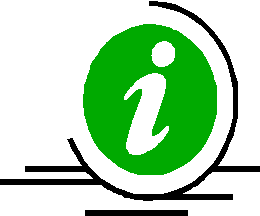
Do You Have a Question About Medicaid Transportation?
Return to Table of Contents
Send an email to:
MedTrans@health.state.ny.us
NYS Medicaid Seating and Positioning Guidelines
A New Tool for Therapists, Practitioners and Vendors
for Evaluation, Ordering and Providing Seating and Positioning Equipment for
Inclusion into Wheeled Mobility Bases
Return to Table of Contents
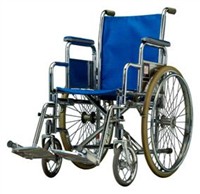
In October 2006, the Department issued the
New York State Medicaid Wheeled Mobility Seating And Positioning Component Guidelines.
The purpose of these guidelines is to provide detailed coverage criteria for wheeled mobility seating and positioning equipment to all stakeholders so that medically necessary equipment is provided to Medicaid enrollees in a timely manner.
These guidelines are the product of extensive collaboration with practitioners, therapists, medical equipment providers, advocates and Medicaid medical review staff, utilizing state and national standards.
It is expected that these guidelines will be augmented in the near future with a recommended Seating and Positioning attachment template, for use in prior approval submission and/or clinical documentation supporting medical necessity.
The guidelines will assist providers in collecting and formalizing all necessary information to support Medicaid approval and/or payment for seating and positioning equipment. In addition, plans are underway to develop a more detailed coverage criteria and attachment template for wheeled mobility bases, also utilizing state and national standards. When completed, these additional tools will be available on the web.
The Seating and Positioning Guidelines are located at:
http://www.emedny.org/ProviderManuals/DME/communications.html
Questions? Please contact the Division of Medical Review and Provider Enrollment at:
(518) 474-8161.
Restructuring Long Term Care in New York State
Money Follows the Person
Federal Rebalancing Demonstration Program
Return to Table of Contents
In January 2007, the federal Centers of Medicare and Medicaid Services approved New York's application to participate in the Money Follows the Person, (MFP) demonstration that will provide enhanced federal Medicaid reimbursement for select services to persons who transition to community based care after having been in a nursing home for more than six months.
The additional revenue for the State is anticipated to reach up to $27 million over the next five years. Program services, expected to begin in January 2008, will be provided through the new Nursing Home Transition and Diversion waiver program.
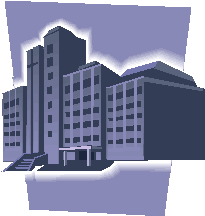
The MFP grants are intended to assist States in building infrastructures that will result in effective and enduring improvements in community-based long-term care and support systems for people with disabilities of all ages. Therefore, states participating in the demonstration are required to reinvest their additional revenue in projects designed to improve their community based care system. New York will use the enhanced reimbursement for several purposes that were identified in close cooperation with stakeholder advisors as necessary to improve access to long term community integrated care and services.
The planned initiatives include:
- establishment of a Housing Taskforce, composed of the representatives of key State agencies and other stakeholders, to address housing related barriers to community reintegration;
- communication with nursing home residents regarding community transition opportunities; coordinated efforts with the DOH Discharge Planning Work Group, the Point of Entry program and advocates to avoid unnecessary acute care discharges to nursing home settings;
- establishment of OMH and OMRDD procedures to assure that individuals with mental illness or developmental disabilities are provided information regarding community based options; and
- provision of assistive devices on a loan basis through partnership with Technology Related Assistance for Individuals with Disabilities (TRAID).
Additional information on the LTC Restructuring Program may be obtained online at:
http://www.health.state.ny.us/facilities/long_term_care/index.htm
or by calling the Office of Long Term Care (518) 408-3744.
Providers
Please copy and distribute to your Medicaid clients.
From The Bureau of Injury Prevention....
Making Playgrounds Safe for Our Children
Return to Table of Contents
Each year, more than 200,000 children in America require a trip to the hospital emergency room as a result of a playground injury. Almost half of these visits involve severe injuries such as fractures, concussions, internal injuries, amputations, or dislocations. Even death can occur as a result of playground injuries.
Between 1990 and 2000, 147 children under the age of 14 died on playgrounds. Most of these deaths resulted from strangulation or falls. Most non-fatal injuries occur on public playgrounds, which are playgrounds not located on private residential property. However, most of the 147 deaths occurred on home playgrounds.
All children are at risk of being hurt on a playground, though girls are injured somewhat more often than boys. Children between the ages of 5 and 9 are seen in hospital emergency rooms more than any other age group. These children are most often hurt at school.
What Can We Do To Make Playgrounds Safe?
Tips for Home Playgrounds
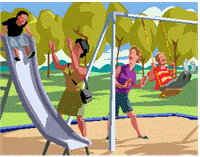
- Make sure that your yard is big enough for the equipment you are planning to purchase.
- Keep in mind the location of tree branches, utility poles, wires and other obstacles that may be near the playground site before setting up the equipment.
- Buy equipment suiting your child's weight and age as recommended by the manufacturer and set up the equipment in accordance with the manufacturer's directions.
- Be sure the equipment complies with safety standards for home playground equipment.
- Be sure that structures are level, securely anchored to the ground, and allow for drainage.
- Check structures for loose or inadequate hardware. Loose screws or open hooks can "pinch" skin or fingers or can catch on clothing causing strangulation.
- Ensure that each piece of equipment has an adequate "fall zone" of at least 6 feet surrounding the structure and that the fall zone is covered with an appropriate amount of surfacing such as sand, pea gravel, or hardwood mulch to absorb the force of a child falling.
- Ensure that your child is dressed appropriately when using equipment. Winter scarves or clothing with hoods or drawstrings should not be worn since they can cause strangulation.
On public playgrounds, safety maintenance of the equipment is out of a parent's control. However, there are certain things to look for to make sure that the playground your child is using is "safe".
Tips for Public Playgrounds
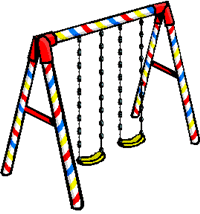
- Raised equipment must have chest-high guard rails.
- To prevent a child's head from becoming caught in a structure, openings should be less than 3-1/2 inches or greater than 9 inches.
- A fall zone of at least 6 feet covered with appropriate surfacing (sand, pea gravel, or hardwood mulch) is a must!
- Check structures for loose or inadequate hardware. Loose screws or open hooks can "pinch" skin or fingers or can catch on clothing causing strangulation.
- Children should not wear winter scarves or clothing with hoods or drawstrings as they are a strangulation hazard.
- Be on the look-out for obstacles or trip hazards that may cause falls.
- Look for signs that offer information about the safety and use of the equipment.
SUPERVISION! SUPERVISION! SUPERVISION!
The majority of playground injuries occur as a result of lack of supervision. Kids who become bored with the proper use of playground equipment can find alternative and more dangerous ways to use it. For example, instead of sliding down a slide as intended, a child may decide to climb up the slide which can be hazardous. This is an instance when supervision can prevent a potentially hazardous situation from resulting in an injury.
- Be there with your children! Not only might this prevent the injury in the first place, but having an adult present to take action after an injury occurs can mean the difference between life and death.
- Keep your eyes on your child and advise them how to use the equipment properly.
- Be on the lookout for structures that are broken, damaged, wet, or covered with sand or gravel. Do not allow your children to play on equipment that is closed or roped off.
For more information on playground safety, please contact the Bureau of Injury Prevention at:
(518) 473-1143; or
visit the National Program for Playground Safety website at: http://www.uni.edu/playground/
Seminar Schedule
Return to Table of Contents
- Do you have billing questions?
- Are you new to Medicaid billing?
- Would you like to learn more about ePACES?
If you answered YES to any of these questions, please consider registering for a Medicaid seminar. Computer Sciences Corporation (CSC) offers various types of seminars to providers and their billing staff. Many of the seminars planned for the upcoming months offer detailed information and instruction about Medicaid's web-based billing and transaction program - ePACES. ePACES seminars are designed for specific provider types.

ePACES is the electronic Provider Assisted Claim Entry System that allows enrolled providers to submit the following type of transactions:
- Claims
- Eligibility Verifications
- Utilization Threshold Service Authorizations
- Claim Status Requests
- Prior Approval Requests
Professional providers such as physicians, nurse practitioners and private duty nurses can even submit claims in "REAL-TIME" via ePACES. Real-time means that the claim is processed within seconds and professional providers can get the status of a real-time claim, including the associated paid amount, without waiting for the remittance advice to be delivered.
Seminar locations and dates are available at the eMedNY website. Seminar registration is fast and easy. Seminars are free to enrolled Medicaid providers.
Go to http://www.emedny.org/training/index.aspx to register for the eMedNY Training Seminar appropriate for your provider category and location. Review the seminar descriptions carefully to identify the seminar appropriate to meet your training needs. Registration confirmation will be instantly sent to your email address.
If you are unable to access the Internet to register, you may also request a seminar schedule and registration information by contacting CSC's Fax on Demand at 800-370-5809.
Request document number 1001 for a list of seminars and registration information to be faxed to you.
Please contact the eMedNY Call Center at (800) 343-9000 if you have questions about registration.
CSC Regional Representatives look forward to meeting with you at upcoming seminars!
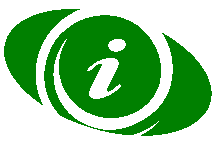
PROVIDER SERVICES
Return to Table of Contents
Missing Issues?
The Medicaid Update, now indexed by subject area, can be accessed online at the New York State Department of Health website:
http://www.nyhealth.gov/medicaid/program/update/main.htm
Hard copies can be obtained upon request by emailing: MedicaidUpdate@health.state.ny.us
Questions About an Article?
For your convenience each article contains a contact number for further information, questions or comments.
Questions about Billing Claims and Performing MEVS Transactions?
Please contact CSC Provider Services at: (800) 343-9000.
Patient Eligibility
Call the Touchtone Telephone Verification System (800) 997-1111, (800) 225-3040 or (800) 394-1234.
Address Change?
Questions should be directed to CSC at (800) 343-9000, option 5.
Fee-for-service Provider Enrollment
A change of address form is available at:
http://www.emedny.org/info/ProviderEnrollment/Provider%20Maintenance%20Forms/6101-Address%20Change%20Form.pdf.
Rate-based/Institutional Provider Enrollment
A change of address form is available at:
http://www.emedny.org/info/ProviderEnrollment/Provider%20Maintenance%20Forms/6106-Rate%20Based%20Change%20of%20Address%20Form.pdf
Comments and Suggestions Regarding This Publication?
Please contact the editor, Timothy Perry-Coon at MedicaidUpdate@health.state.ny.us or via telephone at (518) 474-9219 with your concerns.
The Medicaid Update: Your Window Into The Medicaid Program
The State Department of Health welcomes your comments or suggestions regarding the Medicaid Update.
Please send suggestions to the editor, Timothy Perry-Coon:
NYS Department of Health
Office of Medicaid Management
Bureau of Program Guidance
99 Washington Ave., Suite 720
Albany, NY 12210
(e-mail MedicaidUpdate@health.state.ny.us)
The Medicaid Update, along with past issues of the Medicaid Update, can be accessed online at the New York State Department of Health web site:http://www.health_care/medicaid/program/update/main.htm